She lumbers across the dusty yard towards us, moving slowly and carefully on her tree-trunk legs. Her trunk waves gracefully in front of her, as though she is feeling her way towards us. When she gets closer, we realise she is completely blind.
The Asian elephant reaches the platform Stephen and I are standing on, and sniffs the air uncurling her trunk to its full length. She can smell people, and is no doubt hoping we have a treat to feed her. But it is not tea time yet, so all we can do is stroke the rough surface of her wrinkled skin.
We marvel that this blind ageing elephant has found a safe and kind home in which to live out her days.
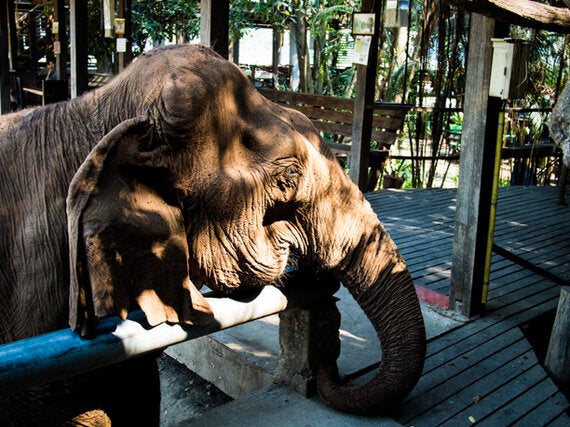
We are at Elephant Nature Park, just outside of Chiang Mai in Northern Thailand. It's a rescue centre and sanctuary for Asian elephants who have been abused or injured on the job. It also might be the only truly animal-friendly attraction in Thailand.
Animal lovers visiting Thailand are inundated with opportunities to get up close to the country's most alluring species. Ride on the back of an elephant! Have your picture taken with a baby monkey! Pull a fully grown tiger's tail!

At first glance, these offers may seem like a once-in-a-lifetime opportunity to cuddle with something wild. And they are. But at what cost to the animals we love?
Before laying your money on the table to meet a wild animal, here are the three questions you should ask.
Question 1: Where Did The Animals Come From?
Richard Thomas, a representative of TRAFFIC, an organisation that monitors illegal trade in wildlife, told me:
TRAFFIC has documented reports of live Asian elephants being illegally exported from Myanmar, mostly to supply the demand of tourist locations in neighbouring Thailand.
In other words, those elephants you've paid to watch play soccer or take you on a ride down the road were likely once part of the ever-dwindling wild Asian elephant population. You are, in effect, giving money to support the demise of an endangered species.
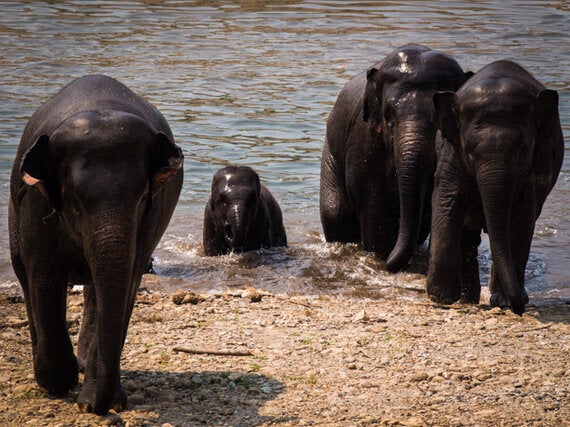
In the case of the famous Tiger Temple, near Bangkok, a study done by Care For The Wild indicates that tigers are regularly illegally moved between the facility and a breeding farm in Laos.
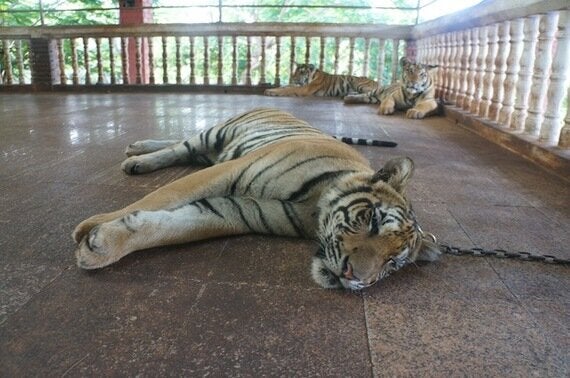
Animals used for photo ops on the beaches and cities of Thailand have often been poached from the wild as well. Paying for a photo with a wild animal is almost certainly contributing to the harm of that species in the wild, and encouraging more poaching and illegal trade.
Question 2: How Are They Trained?
Elephants in Thailand are still tamed and trained in the traditional way. Which means, when they are calves, they spend several days confined in phajaan, also known as The Crush.
In phajaan, the calf is dragged, trumpeting and fighting, into a confining pen by a group of men, who then proceed to stab, prod, kick, and hit the animal for several days until its wild spirit is broken and it stops fighting back.
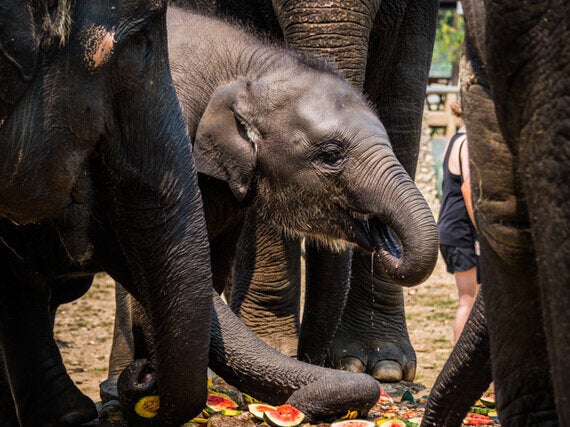
The brutality doesn't end there. Elephants are routinely hit with bullhooks, shot in the eyes with slingshots, and abused in countless other ways in the line of duty.
At Elephant Nature Park, we met blind elephants, elephants who'd suffered broken hips and legs, and elephants who could barely walk because of spine injuries they'd received while carrying tourists.
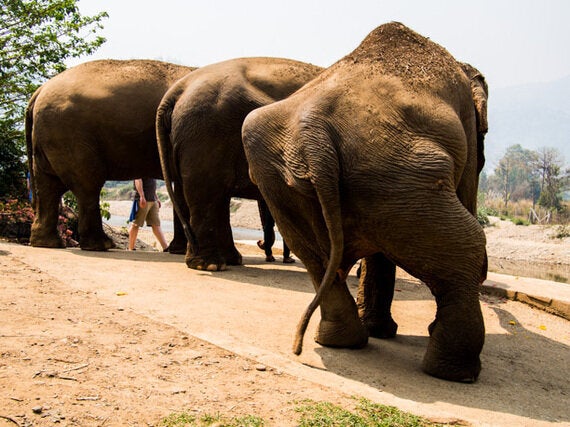
As we arrived at the park, we passed by dozens of elephants lumbering down the side of the road, giving rides to two tourists at a time, sitting on heavy platforms on their backs.
Though they look strong, our guide Ten told us, the elephant's arched spine is the wrong shape to carry a heavy weight. Many former trekking elephants end up at Elephant Nature Park, too injured to continue working for their previous owners.
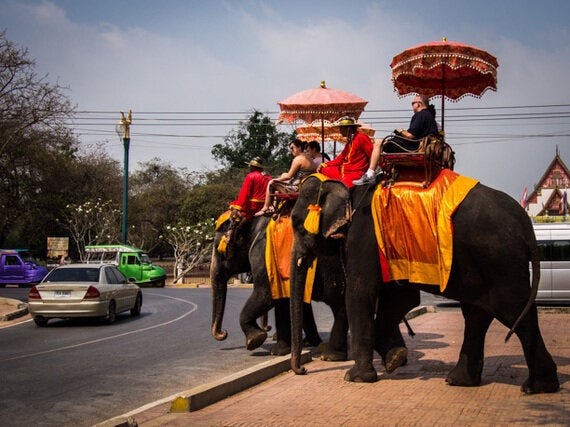
So even if the animals you choose to ride seem well treated right now, their history and their future are probably not so rosy.
Question 3: Where Is My Money Going?
Don't be fooled into thinking your attraction entrance fee is contributing to animal welfare or conservation.
Caring for wild animals is an expensive business. Food, water, proper medical care, enclosures, trainers, staff... all of these things cost money. A lot of money.

Animals might not be fed properly, their enclosures can become overcrowded or run down, and the staff may be poorly trained and inexpert in dealing with animals.
In any for-profit attraction, which includes all elephant trekking camps and elephant shows, Tiger Temple, Tiger Kingdom, and other similar places, your money slips into the pockets of the owners and employees, not back into conservation programs.
Even if they are perfectly cared for, the animals are still being held and made to perform all in the name of a tourist attraction.
Turner Barr, the creator of Around The World In 80 Jobs, has this to say about his time volunteering at Tiger Temple:
For me it was probably the most uncomfortable part of volunteering at Tiger Temple – hearing squealing baby tigers as tourists molest them for photos.
Is it really OK to restrain wild animals and make them work just so we can have something cool to post on Instagram?
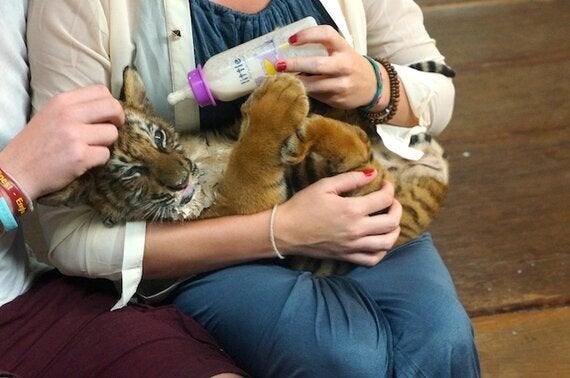
If you want your money to benefit wild animals, consider donating directly to WWF or TRAFFIC, who fight to change policy and culture to benefit animals in the wild.
If you want to see wild animals in Thailand, visit one of Thailand's many national parks or go on a wilderness trek to see them in their natural habitat.
Read more about our daily adventures in Thailand at My Five Acres.
Tiger photos courtesy Around The World In 80 Jobs, copyright Turner Barr. All other photos copyright Jane Mountain, 2014